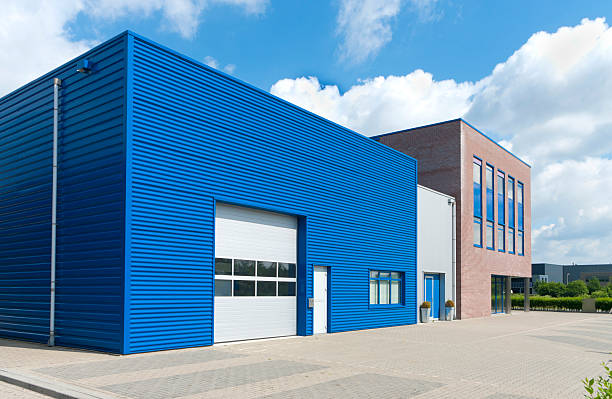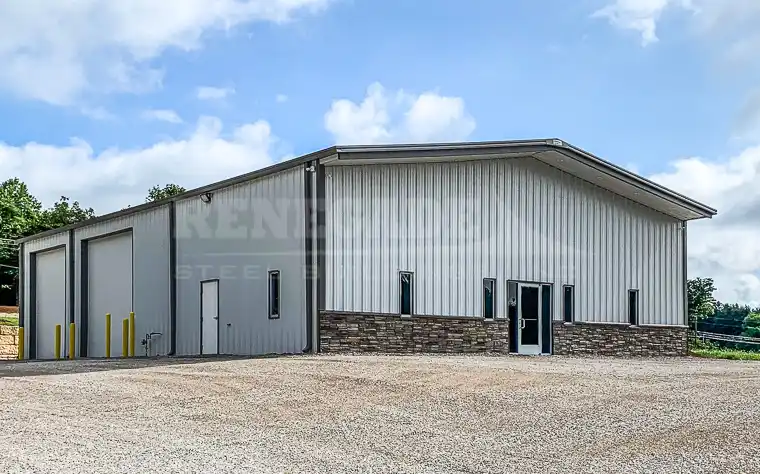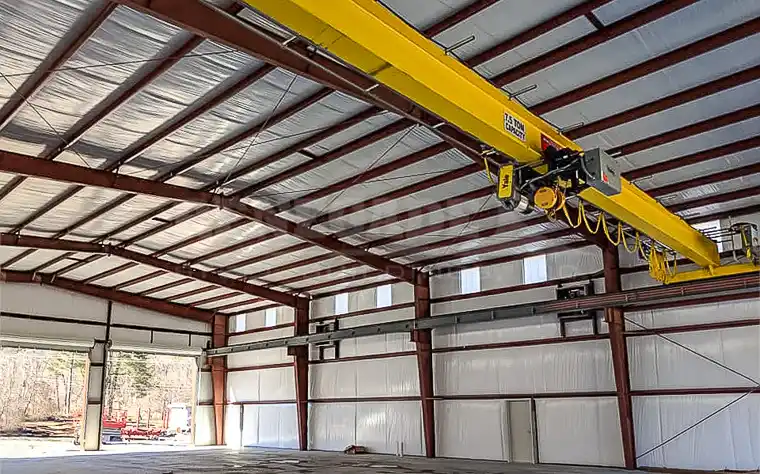The Competitive Advantage of Steel Structures: Why Select This Superior Alternative
Steel structures have become a compelling selection in the realm of building for a wide variety of reasons. From their robust toughness to cost-effectiveness and sustainable qualities, steel frameworks use a series of benefits that establish them apart in the market. The affordable edge that steel buildings hold prolongs far beyond their first appeal, making them a preferred alternative for those looking for long life and flexibility in their building and construction projects. As we check out the realm of steel constructions, it becomes evident why this superior option has gathered significant attention from designers, designers, and architects alike.
Durability and Long Life
In the realm of durability, building and construction and toughness are essential aspects that emphasize the value recommendation of steel buildings. Steel is renowned for its toughness and capacity to stand up to various environmental conditions, making it an excellent choice for long-lasting frameworks. Unlike conventional products like timber or concrete, steel does not warp, fracture, or rot over time, making certain that a steel building stays structurally sound for decades.
One vital factor adding to the durability of steel buildings is their resistance to insects such as termites, which can trigger substantial damage to wooden structures. Steel is additionally non-combustible, reducing the danger of fire damages and raising the safety and security of occupants. In addition, steel buildings require minimal maintenance compared to various other construction materials, saving both money and time in the lengthy run.
In addition, improvements in steel production technology have even more boosted the long life of steel structures by improving rust resistance and structural stability. With appropriate care and maintenance, a sound steel building can last well over 50 years, offering a long lasting and trusted remedy for numerous building and construction requirements.
Cost-Effectiveness
With its countless financial benefits, steel as a building material uses a compelling economical service for numerous construction jobs. The cost-effectiveness of steel structures stems from several crucial aspects.
Furthermore, the building procedure with steel is much faster and much more reliable compared to various other materials, causing decreased labor costs and earlier project conclusion. Steel structures are likewise energy-efficient, permitting financial savings on heating & cooling expenses. The versatility of steel permits simple growth or adjustment, reducing future building expenses by eliminating the demand for extensive improvements. In general, the cost-effectiveness of steel structures makes them a clever financial investment for numerous construction demands.
Adaptability in Design
The adaptability of steel as a building product permits for a large range of cutting-edge layout opportunities in building projects. Steel structures provide unparalleled versatility in layout, making them a recommended option for designers and building contractors. One of the crucial advantages of steel is its strength-to-weight ratio, which enables the building and construction of big, open spaces without the demand for extreme support columns. This architectural performance permits modern-day and innovative layouts that may not be practical with other structure materials.
Steel's adaptability also enables customization to fulfill specific layout needs. Whether it's curved roofing systems, complex exteriors, or distinct geometric forms, steel can be molded to bring essentially any type of Go Here layout principle to life. Additionally, steel structures can be conveniently expanded or changed, providing future adaptability for adjusting to changing requirements.
In addition, using steel in building and construction enables for sustainable design practices. Steel is extremely recyclable, minimizing ecological impact and promoting green construction. Its toughness and resistance to corrosion guarantee that steel structures keep their visual allure and architectural integrity for many years to come. Ultimately, the adaptability of steel in layout not just boosts the aesthetic allure of buildings yet additionally adds to their durability and functionality.

Sustainable Construction Practices
Structure upon the structure of versatility in layout, lasting construction techniques in steel buildings play an essential duty in mitigating environmental effect and promoting long-lasting eco-friendly remedies. Steel is a highly lasting material as a result of its recyclability and longevity. When steel buildings get to the end of their lifecycle, the steel parts can be recycled and utilized in new building and construction jobs, lowering the demand for resources and decreasing waste. Furthermore, the power performance of steel structures contributes to sustainability initiatives. Steel frameworks can easily fit insulation, photovoltaic panels, and various other energy-efficient features, minimizing power consumption and operational prices over time. This not only benefits the atmosphere yet also supplies lasting cost financial savings for building proprietors.

Quick Building And Construction Timeline

In addition, the structured procedure of putting up steel structures decreases building time substantially. The simplicity of steel building style and the simplicity of assembly contribute to faster job conclusion, making it a perfect selection for clients with time-sensitive demands (steel buildings). In addition, the capability to service various parts concurrently, such as site preparation and structure building alongside steel fabrication, additional accelerates the overall building and construction timeline
Final Thought
In final thought, steel structures provide a competitive benefit as a result of their toughness, cost-effectiveness, adaptability in design, lasting building techniques, and fast building and construction timeline. These variables make steel buildings a premium alternative for different construction tasks, offering lasting benefits and worth. Choosing steel structures can lead to improved efficiency, performance, and sustainability in the building sector.
Unlike conventional products like wood or concrete, steel does not warp, fracture, or rot over time, ensuring that a steel building remains structurally sound for decades.
The versatility of steel as a structure material enables for a wide array of ingenious style opportunities in construction jobs.Structure upon the foundation of flexibility in layout, lasting construction practices in steel buildings play an essential function in mitigating ecological impact and promoting long-lasting eco-friendly services. When steel structures reach the end of their lifecycle, the steel elements can like it be recycled and made use of in brand-new construction projects, minimizing the need for raw products and minimizing web link waste.In final thought, steel structures offer a competitive advantage due to their sturdiness, cost-effectiveness, convenience in layout, lasting construction techniques, and fast building timeline.